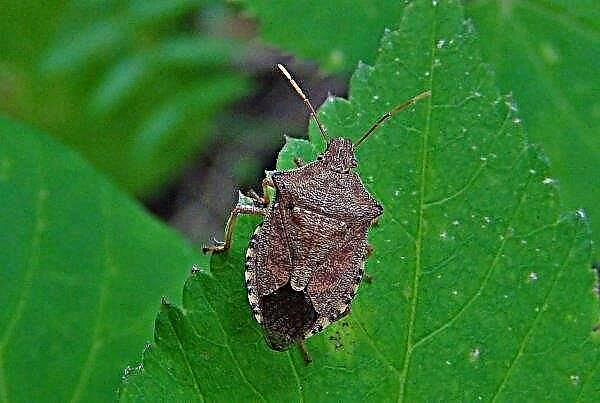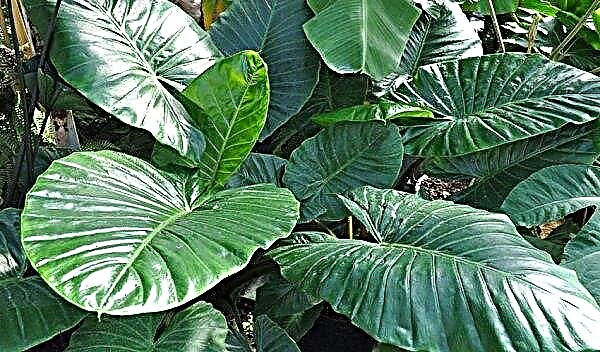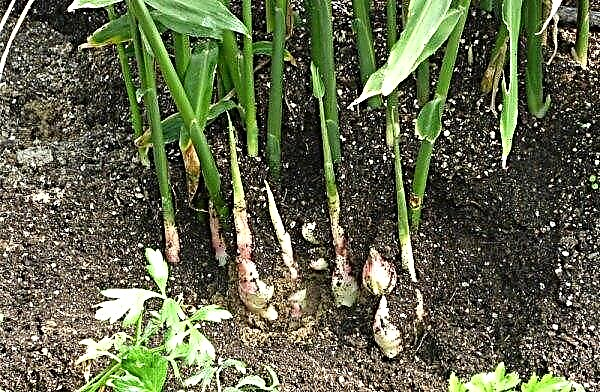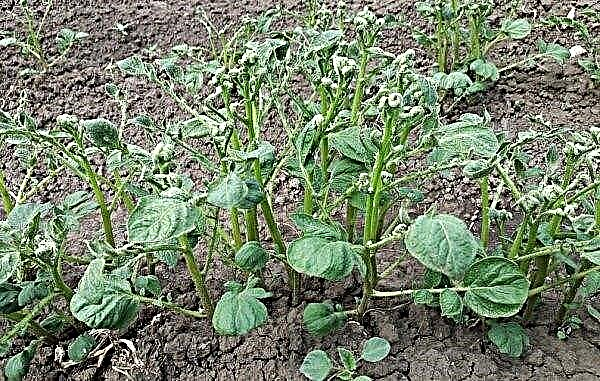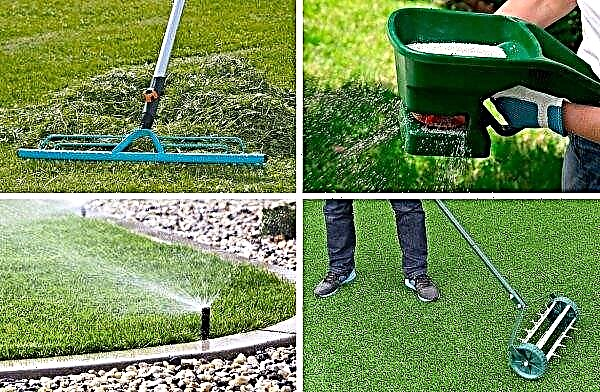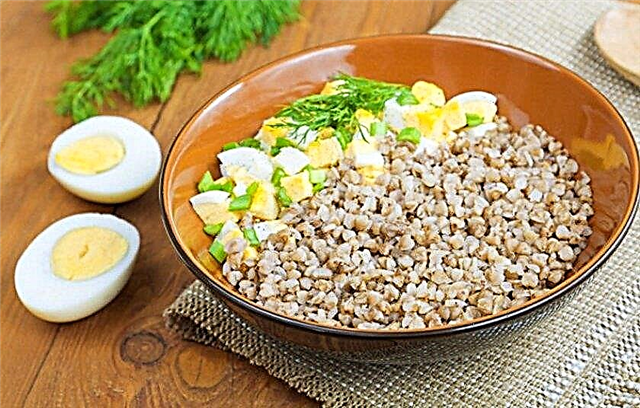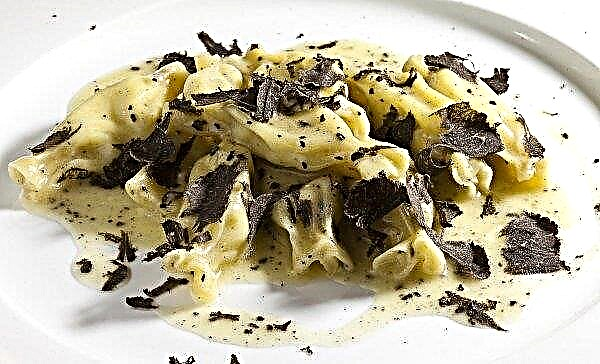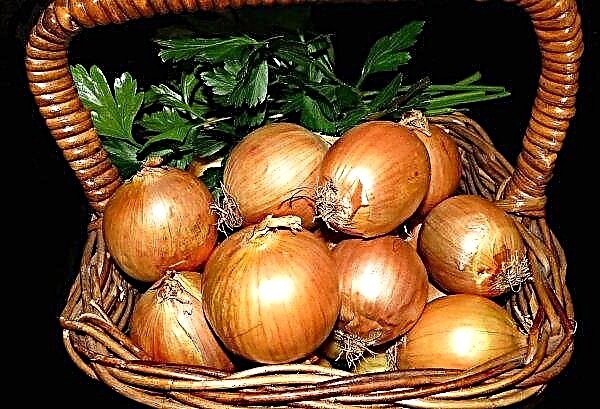Domestic gardeners praise Valentine's tomatoes on the forums, calling the variety a find of the vegetable grower. The characteristics of the variety are really encouraging - from the rules of care to productivity. This article proposes to consider the features of growing tomatoes of this type.
Did you know? The birthplace of tomatoes is Latin America, where vegetables are still found in vivo.
Grade description
Characteristics of valentine tomatoes are as follows:
- limited growth, the maximum height of the bush is 0.7 m;
- early ripening variety, ripening time - 95–98 days;
- Tomatoes grow in open ground, but greenhouse cultivation is possible;
- bushes are resistant to infections;
- fruits elongated, plum-like;
- the color of tomatoes is red;
- fruit weight 80–100 g;
- fleshy flesh;
- the skin is durable;
- the average yield from the bush is 2 kg, from 1 m² - 12 kg.
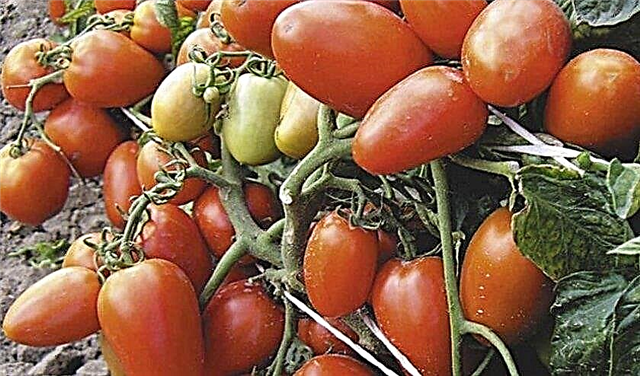
Advantages and disadvantages
- Advantages of the Valentine variety:
- moderate growth;
- unpretentiousness in leaving, drought resistance;
- universal application;
- lack of need for pinching;
- good taste;
- resistance to diseases;
- keeping quality;
- transportability;
- high productivity.
The only drawback of tomatoes is the requirement for garter.
Self-growing seedlings
Valentina is bred in seedlings. The first step in growing seedlings is sowing seeds. The gardener needs to prepare the soil, seeds and containers for growing. Seeds are sown at the optimum time for the variety.
As a result, seedlings grow, which then will need to be moved to the open ground. Until that moment, it is necessary to properly care for it so that the seedlings grow strong.
Optimum timing for sowing
Valentina is an early ripe tomato, therefore seedlings are sown in the third decade of March.
The soil
Valentina tomatoes are unpretentious and perfectly perceive the standard purchase soil for tomatoes. The substrate can be prepared independently. It should consist of a mixture of land, sand, peat and manure in a ratio of 3: 1: 1: 1. Such soil will be loose and nutritious.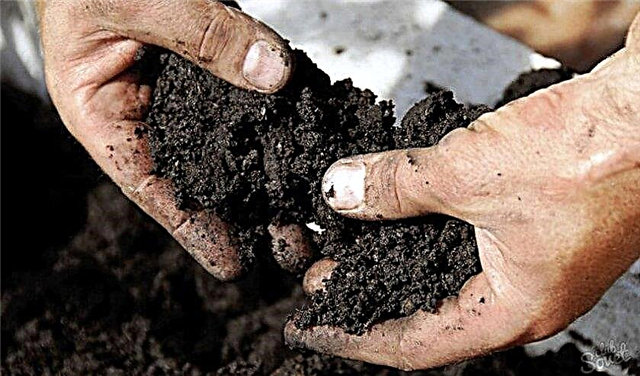 Before sowing, the soil must be decontaminated. The most affordable way is calcination. For this, the substrate is poured onto a baking sheet with a layer of up to 5 cm and placed in the oven. The soil will be disinfected after 30 minutes of calcination at a temperature of +80 ... + 90 ° С.
Before sowing, the soil must be decontaminated. The most affordable way is calcination. For this, the substrate is poured onto a baking sheet with a layer of up to 5 cm and placed in the oven. The soil will be disinfected after 30 minutes of calcination at a temperature of +80 ... + 90 ° С.
Capacity for growing
For sowing, the use of an oblong container or box is optimal. To pick sprouts, you will need separate cups with a diameter of up to 9-10 cm.
Seed preparation
Before planting, seeds must be decontaminated. To do this, soak them for 45 minutes in a 1% solution of potassium permanganate. Such a measure will get rid of possible infections on the surface of the seeds. After soaking, rinse the material in plain water.
Sowing seeds
In the soil, you need to make small holes at a distance of 1.5 cm from each other. Seeds are immersed to a depth of 1-1.5 cm and sprinkled with a small amount of substrate.
Seedling Care
After sowing, the soil must be moistened. The container is closed with polyethylene or glass. For 4–8 days it is placed in a dark place with a temperature of +26 ... + 29 ° С. Moisturizing during this period is easy from the atomizer.
When sprouts appear, they remove the polyethylene or glass. The container is transferred to a bright place, for example, a window sill. Watering is carried out as the substrate dries.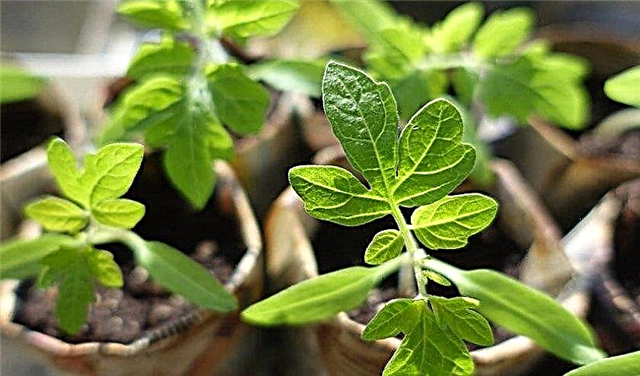 Seedlings with 2 leaves must be dive into separate cups. They are kept in a bright place, withstanding 10-hour daylight hours. With a lack of light, the use of biolamps is recommended. Watering is moderate, every 4-7 days. Before planting, seedlings must be fed with organic matter - manure, compost or humus.
Seedlings with 2 leaves must be dive into separate cups. They are kept in a bright place, withstanding 10-hour daylight hours. With a lack of light, the use of biolamps is recommended. Watering is moderate, every 4-7 days. Before planting, seedlings must be fed with organic matter - manure, compost or humus.
A week before planting, seedlings need to be hardened. Hardening makes the bushes resistant to temperature changes and new conditions. For this, gardeners take out boxes of seedlings on the street. The first day the seedlings are kept outdoors for up to 1 hour. In the following days, the period is gradually increasing. Strong hardened bushes normally withstand transplantation in open ground.
Did you know? 30% of the world's tomatoes are produced by China.
Planting seedlings in a permanent place
The second stage of growing Valentine's tomatoes is transfer to the open ground. In this case, the timing, place and scheme of planting seedlings are important.
The timing
Seedlings will successfully transfer a transplant at the age of 2 months. By calendar terms, this is mid-May. Soil temperature should not be lower than + 21 ° C during the day and + 16 ° C at night.
Seat selection and crop rotation
Tomatoes Valentine are unpretentious to the composition of the soil. In this case, the seedlings well perceive transplantation in the fed soil. The beds need to be loosened and fed with a mixture of manure, sand and peat in equal quantities. Sufficient lighting is needed - not too intense, but not a shadow.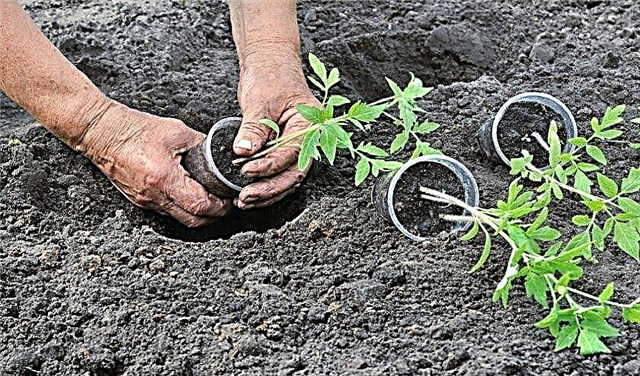 A special role is played by crop rotation. When growing this variety, standard agrotechnical standards for tomatoes are used.
A special role is played by crop rotation. When growing this variety, standard agrotechnical standards for tomatoes are used.
- Good predecessors are called:
- pumpkin;
- cabbage;
- carrot;
- cucumbers
- turnip;
- zucchini;
- green onions;
- squash;
- beets.
- Tomatoes will grow poorly in the place where they used to be grown:
- pepper;
- Tomatoes
- potatoes;
- eggplant;
- peas.
Scheme and depth of landing
The scheme of planting seedlings is 50 cm between the bushes and 50 cm between the rows. The depth of the holes should be 30 cm, that is, on the bayonet of a shovel.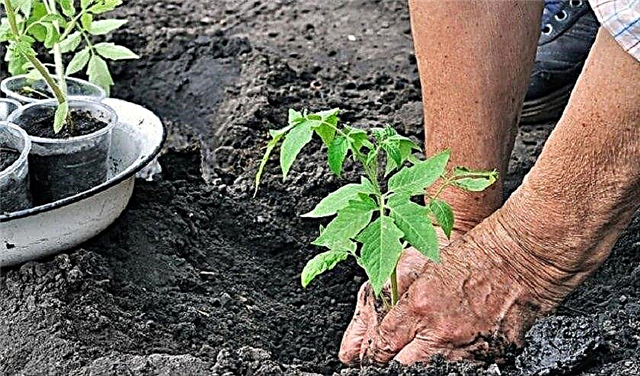
Outdoor Care
Productivity and quality of fruits depend on the care of the bush. The duties of a gardener before ripening tomatoes include watering, fertilizing, caring for the soil and tying.
Watering
The bushes moisturize once a week. The main criterion is the drying of the soil. Waterlogged land, as well as overdried, disrupts the growth of tomatoes.
Important! Water must be warm and settled.
The optimal type of watering is manual from a watering can. Water needs to be poured under the root without affecting the tops.
Fertilizer application
Tomatoes Valentine well perceive both organic matter and complex mineral fertilizers.
Fertilizers during the growing season are applied three times:
- when planting in open ground;
- when flowering;
- after the formation of the fruits.
Stepson
It is not necessary to pinch bushes. Gardeners note that when removing stepchildren, the yield decreases.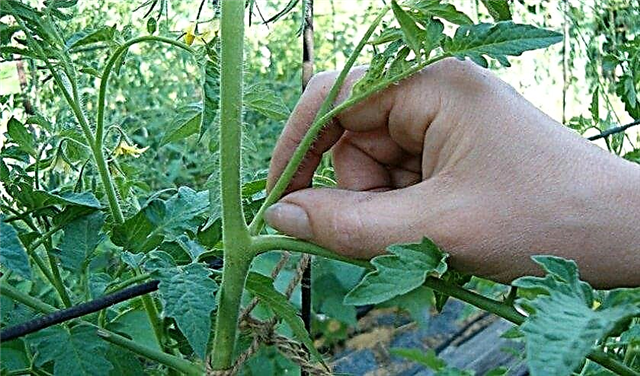
Soil care
Soil care allows the root system to develop without disruption.
To do this, you must:
- remove weeds as they appear;
- loosen the soil 1 time per week;
- twice to spud (1.5 weeks after planting and 3 weeks after the previous hilling);
- mulch with grass, straw, sawdust or other available mulch to preserve moisture.
Tying bushes
Tieing bushes is a must for Valentine's variety. Without a garter, the stems cannot withstand the weight of the fruit and break. A convenient and easy way - tying on a peg. A stick 1 m long is driven into the ground 10 cm from the plant. The stems are tied with fabric ribbons as they grow.
Important! For garter, it is better to use synthetic matter. Natural tissues rot and become seedlings of bacteria.
Harvesting
The fruits ripen by August. On one bush, an average of 2 kg of fruit ripens. From 1 m², vegetable growers remove up to 12 kg of tomatoes. Harvested perfectly tolerates transportation and storage.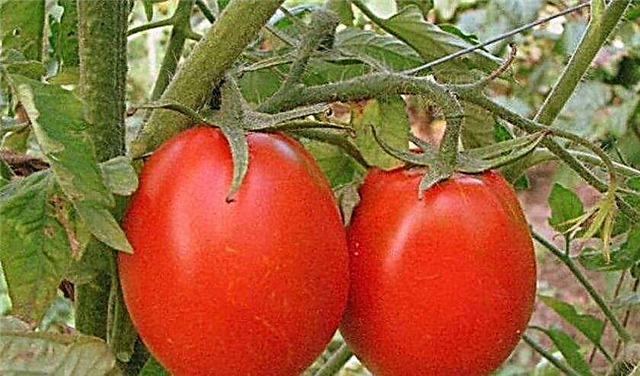 Bushes of the Valentine variety surprise with yield and quality of fruits. The main advantage of the variety is its unpretentiousness, which is why even a beginner can grow a tomato.
Bushes of the Valentine variety surprise with yield and quality of fruits. The main advantage of the variety is its unpretentiousness, which is why even a beginner can grow a tomato.

